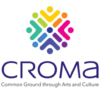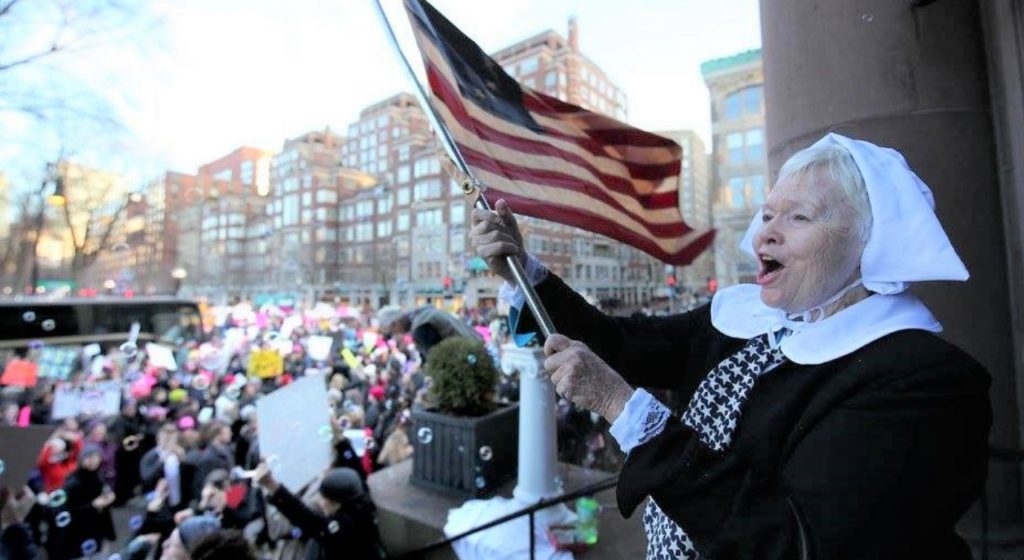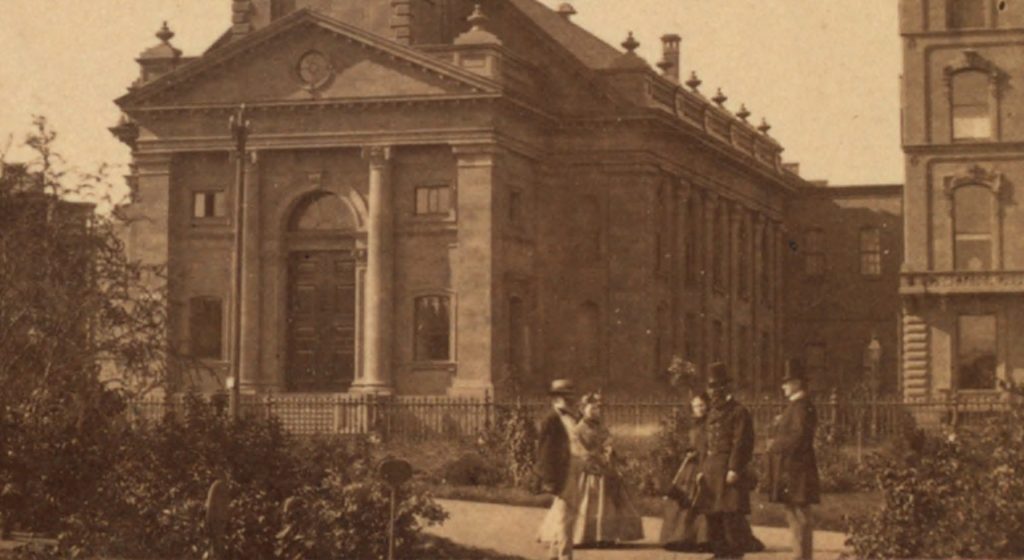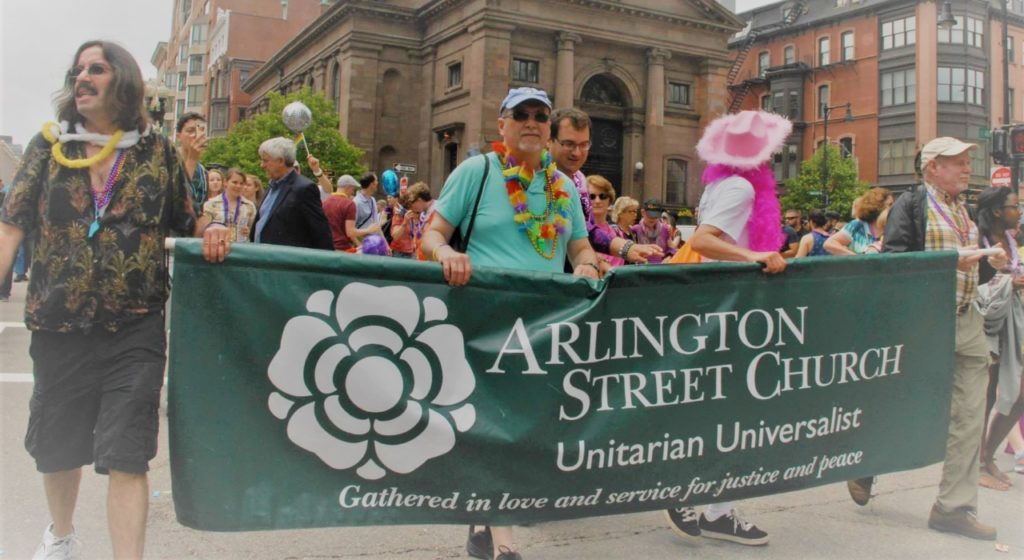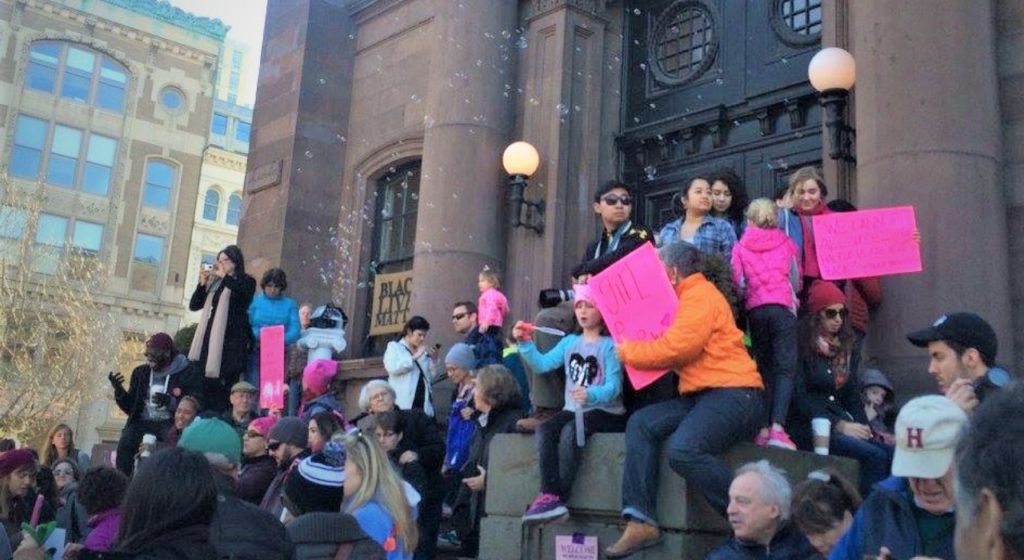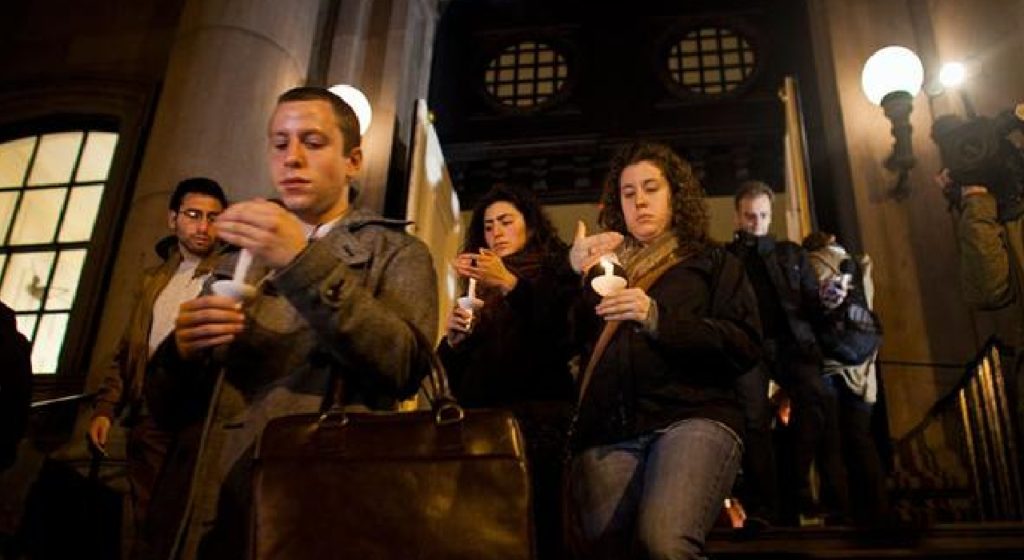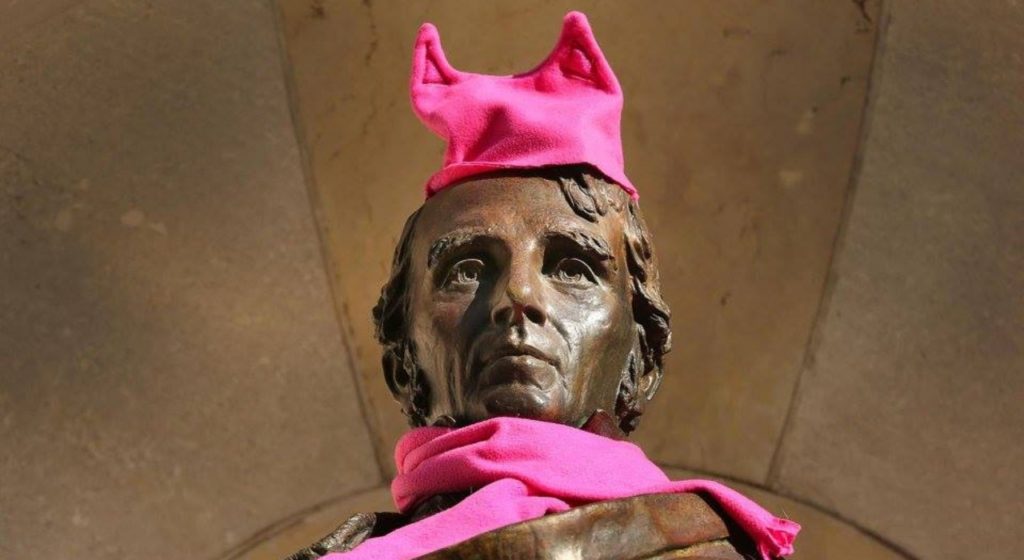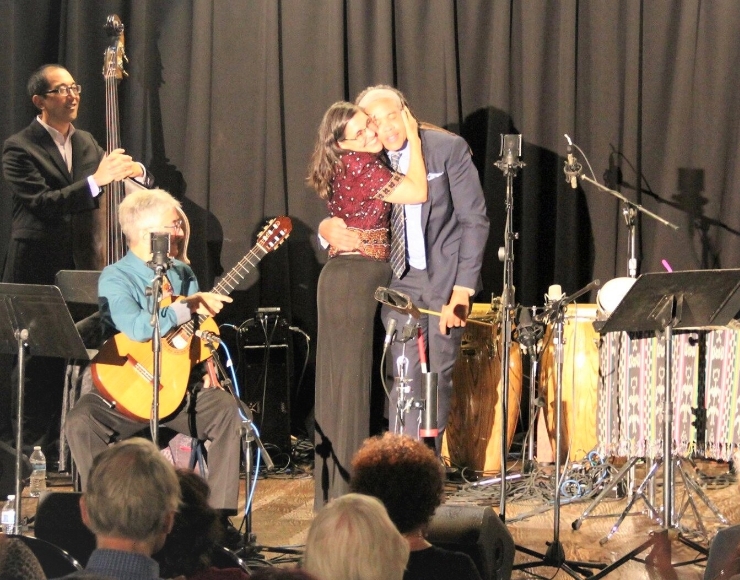Arlington Street Church is an American institution, renowned for its landmark building, pioneering spirit, and historic stature. The congregation’s story begins in 1729 with a group of Scots-Irish immigrants gathered in a barn on Boston’s Long Lane.
Fifty years later, the church was a leading force in every reform movement of the day, from advocating for fire brigades and smallpox vaccinations to petitioning for abolition of the slave trade. The congregation’s fiery preacher, Rev. Jeremy Belknap, was the founder of the Massachusetts Historical Society, the first of its kind and the model for many that would follow. In the 19th century, the church was led by the esteemed preacher and theologian, Rev. William Ellery Channing. In 1903, the city of Boston erected its first statue of a clergyperson to honor this “Father of American Unitarianism.”
Arlington Street Church has played a significant role in the history American social justice movements with members passionately advocating for abolition, women’s suffrage, civil rights, queer rights, and world peace. The church’s 16 hand-rung bells have long echoed throughout the Back Bay, including for Boston’s first Gay Pride Parade in 1971— and every Pride parade since. Each year, the steeple bells celebrate Opening Day for our beloved Red Sox and toll in memoriam on September 11th.
Historical Highlights
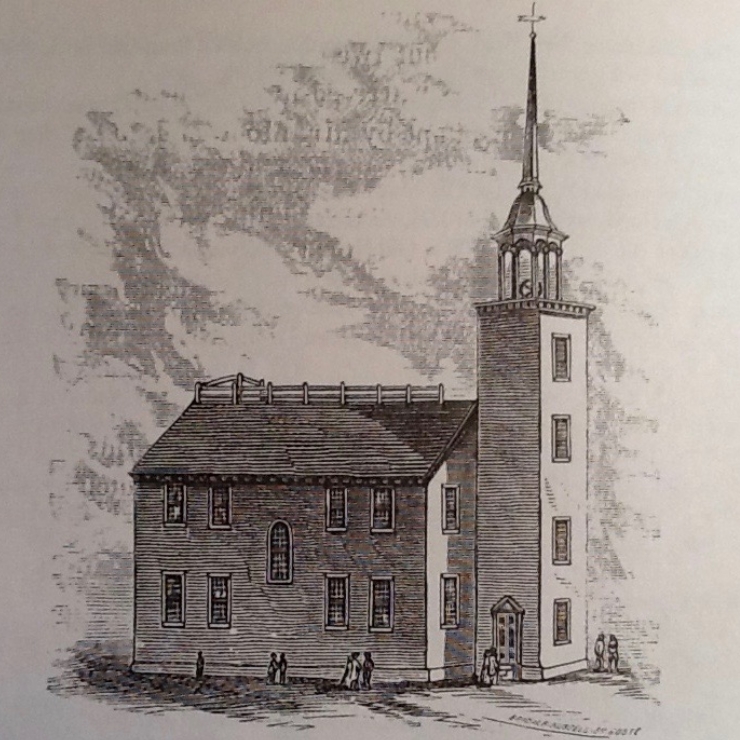
1729
The congregation is founded by a humble group of Scots-Irish Presbyterians fleeing persecution in Northern Ireland. When Boston’s Puritan establishment prohibited them from building a meeting house, they gathered in a converted barn on Long Lane and became known as the Church of the Presbyterian Strangers.
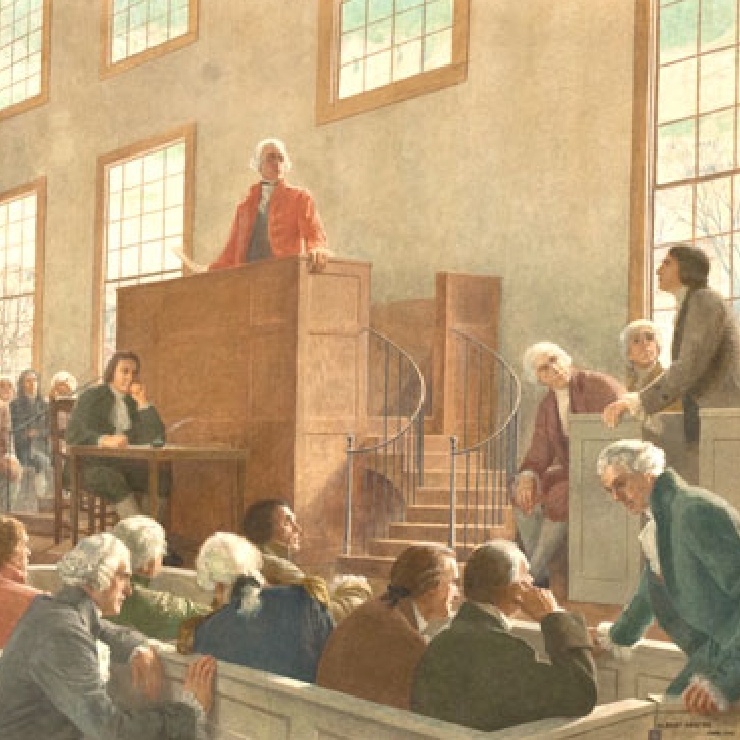
1788
Delegates of the Massachusetts Constitutional Convention spend a month debating the new federal constitution at our Long Lane Meeting House. Gov. John Hancock’s proposal to include a Bill of Rights breaks the stalemate, and the city erupts in celebration upon news of the vote. In honor of ratification, Long Lane was renamed Federal Street, and the congregation became the Federal Street Church.

1803
A young and frail Rev. William Ellery Channing is called to Federal Street Church. In his four-decade ministry, Rev. Channing became a leading theologian whose writings influenced Alexis de Tocqueville, John Stuart Mill, Max Weber, and Queen Victoria. His teachings provided the philosophical foundation for Transcendentalism and American Unitarianism. Channing’s preaching inspired thousands, including congregants Dorothea Dix and Horace Mann, who became pioneers in mental health reform and public education.

1861
Arlington Street Church is dedicated as the first public building in the Back Bay. This landmark is a masterwork of Arthur Delevan Gilman and houses the world’s largest single-themed collection of Tiffany stained glass windows. The church’s graceful 190-foot spire remains a prominent landmark at the foot of Boston’s Public Garden.

1965
Rev. James Reeb is one of several Arlington Street Church leaders who travel to Selma to march for voting rights with Dr. Martin Luther King Jr. After Rev. Reeb’s brutal murder by white segregationists, Arlington Street Church hosts his memorial service and an additional 30,000 mourners on the Boston Common. The following day, President Johnson invokes Rev. Reeb in delivering his draft of the Voting Rights Act to Congress.

1967
To protest the war in Vietnam, Arlington Street Church’s Rev. Jack Mendelsohn hosts an anti-draft rally with Dr. Benjamin Spock and Rev. William Sloane Coffin. At this legendary event, 340 young men turn in or burn their draft cards. A few months later, the church became one of the first houses of worship to grant sanctuary to Vietnam War resisters being pursued by U.S. Marshalls.
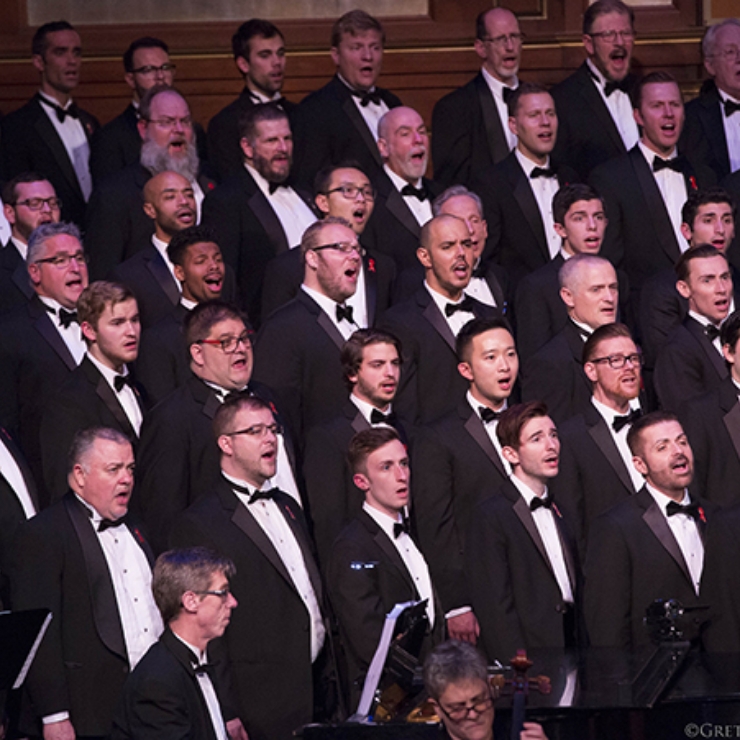
1970’s
Throughout the 1970s, a variety of queer rights groups find a home at Arlington Street Church. The first AIDS benefit concert was held in our sanctuary, and the Daughters of Bilitis, Boston Area Gay and Lesbian Youth, and the Boston Gay Men’s Chorus were founded at Arlington Street Church.
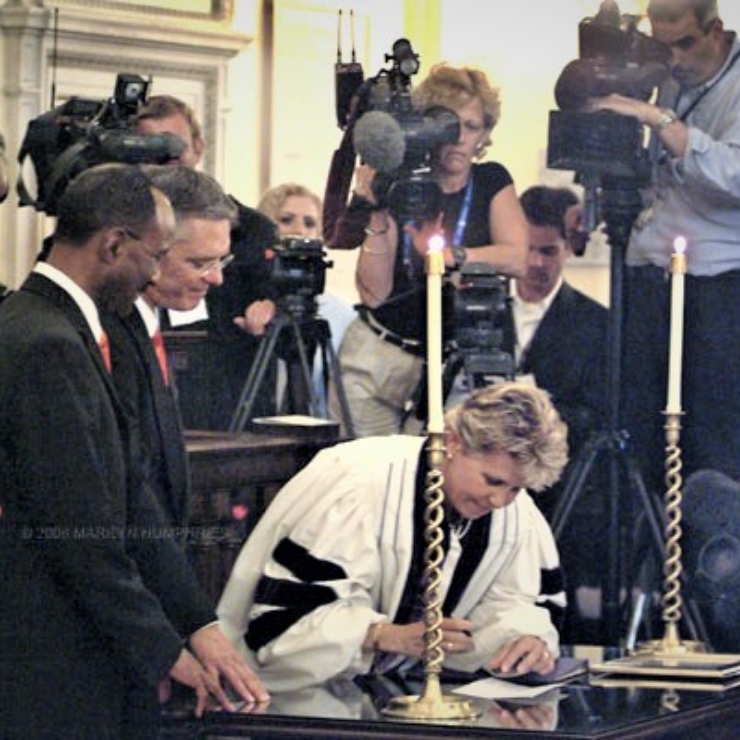
2004
David Wilson and Robert Compton are married by Rev. Kim K. Crawford Harvie in the first legal same-sex wedding in a church in the United States. Three days later, 55 couples are married at Arlington Street Church in one marathon day of historic weddings.
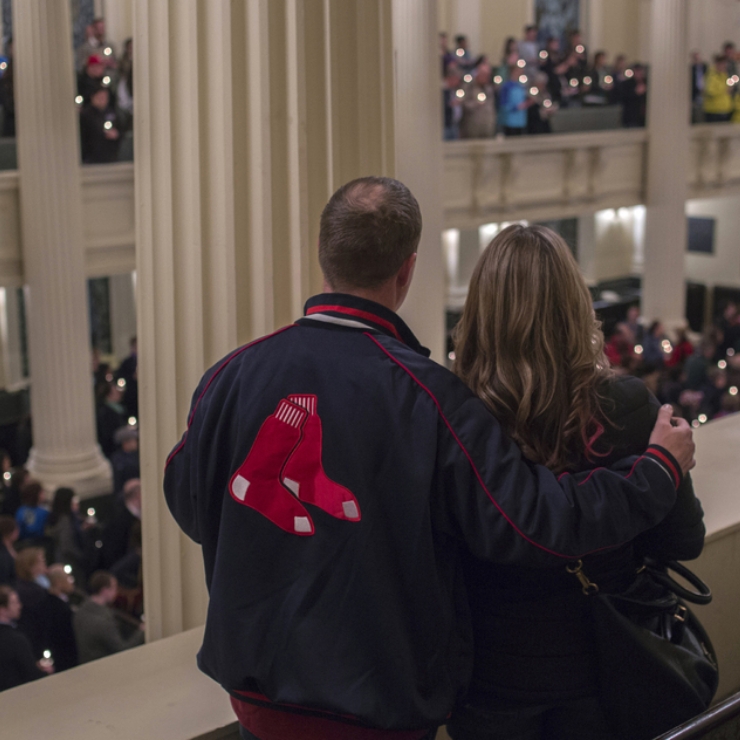
2013
Arlington Street Church hosts hundreds of mourners in an interfaith candlelight service honoring the victims of the Boston Marathon bombings. In the following months, the church became the site of an impromptu memorial of thousands of prayer flags bearing handwritten words of grief and encouragement from passersby from all over the world.
Arlington Street Church
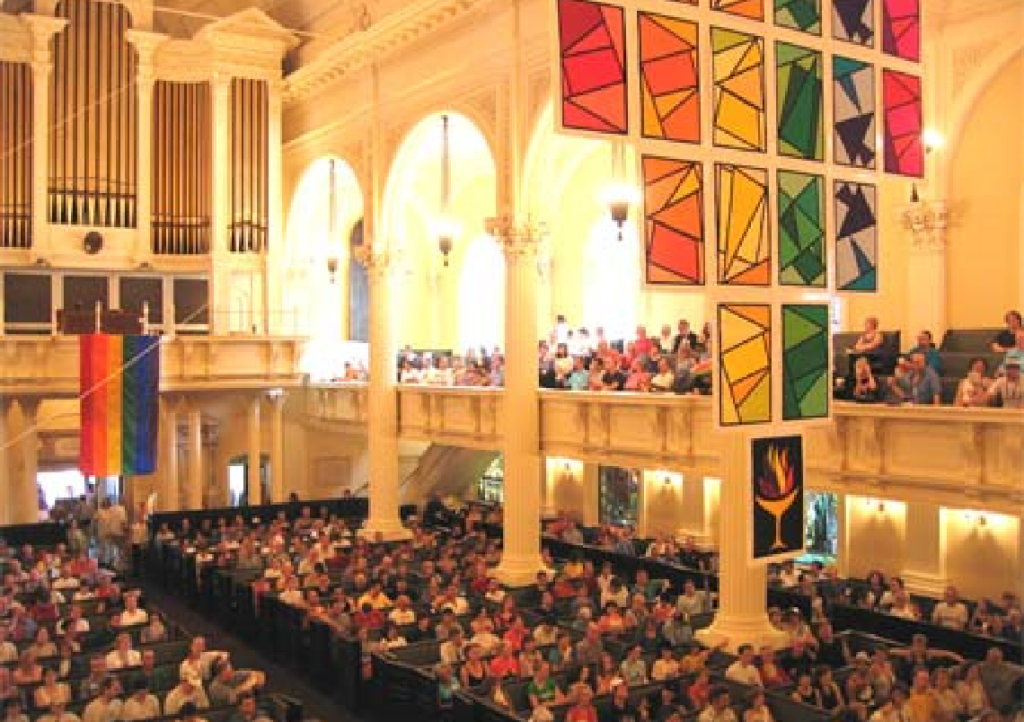
Arlington Street Church continues to be a pilgrimage site for visitors from around the world eager to experience the “cathedral of Unitarian Universalism.” The congregation’s progressive theology embraces all of the great faith traditions, making it welcoming to all. Spiritual leaders from around the world have spoken from the Arlington Street Church pulpit, including Rev. Jesse Jackson, Krishna Das, Sylvia Boorstein, Jon Kabat-Zinn, and Chögyam Trungpa Rinpoche. Dr. Benjamin Spock, Dr. Marion Wright Edelman, Senator Edward Kennedy, Dr. Abraham Maslow, Betty Friedan, Noam Chomsky, and actors Kathleen Turner and Matt Damon have also spoken here—among many, many others.
Arlington Street Church remains an active community hub for educational and cultural events, critical social service programs, and social justice organizing. Since 1984, the church has housed the Friday Night Supper program, which provides free weekly dinners to anyone in need of a home-cooked meal. The church also serves as the distribution center for Rice Sticks and Tea, the region’s only program serving Asian immigrants and refugees with meals that suit clients’ cultural cooking traditions and preferences. In 2019, the church welcomed Ágora Cultural Architects as a vital partner producing a dynamic lineup of events celebrating the richness of Latinx culture at Arlington Street Church.
Minns Lecture
Minns Lecture: A History of Arlington Street Church
by Rev. Kim K. Crawford Harvie, Senior Minister
Presented at the General Assembly of the Unitarian Universalist Association
June 29, 2003
Here’s how I wanted to begin this evening: Once upon a time, a group of Scots-Irish immigrants known as the Presbyterian Strangers, having been forbidden to establish a church in the Boston of the first Church and King’s Chapel,[1] gathered in a converted barn on Long Lane in Boston. The year was 1729.[2]
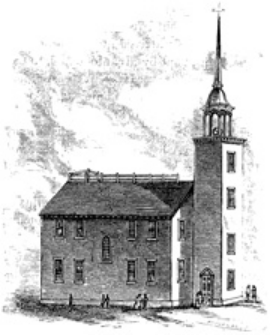
I figured that, half an hour from now, I should have covered our moves from the barn on Long Lane to a meeting house at the corner of Long Lane and Berry Street[3] (where, in 1788, the Massachusetts State Convention, under Unitarian president John Hancock, met and ratified the U.S. Constitution, and changed the church and location’s name to Federal Street), and then, in 1809, to a third meeting house (built to accommodate the overflow crowds attracted by the ministry of William Ellery Channing).[4]
I should have covered our move here to Arlington Street, the first public building built in Boston’s Back Bay—our fourth location, not including the two congregations that merged with us:[5] Hosea Ballou’s Second Universalist Society, and James Freeman Clarke’s[6] Church of the Disciples,[7] champions of abolition and suffrage.
I should have covered our first minister, the Calvinist Irishman Rev. John Moorhead, who served for 44 years and was eulogized as “an Israelite in whom was no guile,”[8] although he was a slaveholder, a common practice in the Boston of his day;[9] and Robert Annan, driven out by his rigid adherence to Presbyterian authority in post-revolutionary Boston,[10] and possibly by the women of the church;[11] and Rev. Jeremy Belknap, an ardent patriot,[12] who “identified his congregation with every progressive movement of the decade,”[13] from the institution of fire-brigades and small-pox vaccinations to the petitioning of the General Court of Massachusetts to abolish the slave trade.[14]

I should have covered the brief ministry of John Snelling Popkin, known to generations of Harvard Students who studied Greek with him[15] but deemed “too socially diffident for the ministerial office;”[16] and William Ellery Channing,[17] who claimed that religion is not only “a private, personal thing … but a social principle;”[18] and Ezra Stiles Gannett, who, on Federal Street, in 1825, organized the American Unitarian Association,[19] and who, with Reverend Joseph Tuckerman, Father of Social Work, created the Benevolent Fraternity, now known to us as the Unitarian Universalist Urban ministry.
I should have covered the ministries of Ware, Herford, Cuckson, Frothingham, Eliot, Greeley, Mendelsohn, Imara, Carpenter, and that of their congregations, forward through the ages, right up to us. I should have covered our progression from Presbyterianism to Congregationalism[20] to Unitarianism[21] (including the lawsuit which went all the way to the U.S. Supreme Court in 1862, arguing that the land on Long Lane had been deeded to Presbyterians, not Unitarians, and that, therefore, Unitarians had no business worshipping there).
I should have covered our support for the Boston Tea Party [22] and the Revolutionary War and the Civil War; our opposition to the Mexican War, the Spanish-American War, the Vietnam War, and the recent wars in the Middle East; our work for abolition, women’s suffrage, civil rights, lesbian, gay, bisexual, and transgender rights, and our work for world peace.
I figured that I should have covered movements and moments both ghastly and glorious, but I had neglected to do the math, which is simply this: to cover the 274 years of Arlington Street history in 40 minutes would mean speaking for 8.76 seconds per year.
With that in mind, now that you’ve had a taste of our earliest years, I’m going to bring on the feast that began 200 years ago.
More Information
- Three Centuries of Arlington Street Church History:
